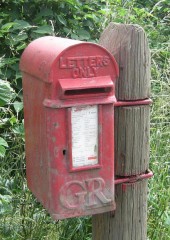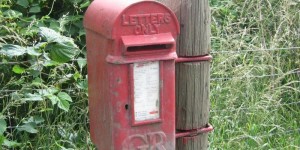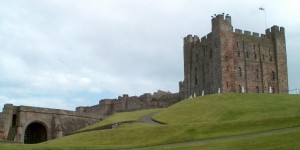Warwick is a small market town in the centre of the country, situated on the River Avon and 34 miles south of the large commercial centre of Birmingham.
Warwick sits atop a small hill to the north of the river Avon with the castle tucked beneath it on the riverbank. It is possible that the continuous settlement of this site began in the sixth century around a weir, which would have provided a natural crossing point to the River Avon. In 914 AD Ethelfleda, daughter of King Alfred, gathered together the remnants of several such scattered settlements to create what became known as 'Wering-wic' or Warwick. In 1068 William the Conqueror ordered Turchil of Arden, a Saxon Earl, to build a motte and bailey castle in the south-west corner of Warwick (as part of the defensive chain of castles built on his journey to deal with a rebellion in Yorkshire), truly beginning what would become Warwick's crowning glory.
Between 1267 and 1449 Warwick Castle was under the ownership of the Beauchamp family and it is from this period that the majority of the existing Castle dates. In 1571 Robert Dudley, the Earl of Leicester, acquired the medieval guildhall which stands just within the Westgate of Warwick where he established the Lord Leycester Hospital which provided accommodation for wounded or maimed soldiers. Today this building still remains a home for ex-servicemen.
The seventeenth century brought two disasters to Warwick. Firstly the plague arrived in 1603 and 1604, striking its deadly path through the town. Then at two in the afternoon of September the fifth 1694 a fire started in a back building behind the last house on the high street. There was a strong south-westerly wind and by the time the townspeople had extinguished the flames the heart of Warwick had been burnt to the ground. Many of the key buildings within Warwick date from the rebuilding.
While industry affected Warwick very little during the eighteenth century, a few elements began to creep into the town during the nineteenth century with the arrival of the canal system in 1800 and the establishment of the Saltisbury Gas Works in 1822.## Getting to WarwickBy Car: Warwick is situated off Junction 15 on the M40 or by taking the M6 at junction 19 off the M1 and then following the A46 from junction 2.
By Train: Warwick is on the main train line from Edinburgh to Bournemouth, however relatively few of the trains only stop there so make certain you are one that does. Otherwise, take the same train line to Royal Leamington Spa, situated 2 miles from Warwick.
By Coach: Regular coaches run to Warwick from Coventry and Birmingham, but travelling from most other places you will be required to change in either of these cities. ## AccommodationWarwick has many places to stay, most of which are of a very high standard. These are mainly B&Bs with between 3 and 6 rooms, so booking in advance is highly recommended. If you want to stay in the heart of the town the 'Rose and Crown' is perfect and, since a recent renovation, offers a fantastic selection food and drink in the bar and restaurant below. If you want a more secluded place to stay, the 'Seven Stars' on Friars Street offers 3 beautiful double rooms with a private garden to enjoy the sunshine.## Places to visitAs well as heading to specific places, the Post Hole highly recommends taking time to walk round the small historic core of Warwick, which contains a variety of different pieces of architecture and is truly beautiful itself. However, if you are looking for specific places to visit you might want to consider:
The Lord Leycester Hospital — not only the set for many a piece of costume drama, this is a remarkable building which is well worth a visit and includes the Queen's Own Hussars Museum.
Hill Close Gardens — a true breath of fresh air. Tranquil and beautiful, these gardens are worth visiting whether or not you have a particular interest in horticulture.
- Museums
- Warwick Museum — housing information on a variety of subjects, from natural history to the occupation of this area, Warwick Museum is well worth a short visit to truly understand the town's place in the scheme of things.
- St. John's House Museum — a gorgeous Jacobean mansion which now is home to a recreated Victorian kitchen and classroom for those with an interest in the more domestic aspects of history. For those with a more military interest in the past, this museum also houses the Royal Warwickshire Regimental Museum. With beautiful gardens this is a place for the whole family.
- Other attractions
- Warwick Castle — A treat for the entire family, especially throughout the summer when as well as the stunning castle itself there are opportunities to enjoy jousts, hawking, pageants, concerts, talks and events (occasionally even the odd trebuchet!). While this is an expensive attraction it is well worth the it if you make a whole day out of it and make the most of the what's on offer. It is certainly one you will remember if you do take the time to enjoy it.
- Places close by
- Royal Leamington Spa — This spa town is well worth a visit, especially on a sunny day, where the beautiful Georgian architecture of much of the town really comes into its own. With Jefferson Gardens to offer a quiet retreat, Leamington Spa is a busier town than Warwick with a greater numbers of shops, restaurants and bars to keep you entertained.
- Stratford Upon Avon — Famous for the Bard himself, it is almost criminal not to take in Stratford if you visit Warwick as the journey is barely 15 minutes by car. A beautiful midlands town, with a fascinating array of history, Stratford will keep even the most demanding culture seeking visitor busy while providing varied places to eat, drink, shop and just take in the beauty of the river Avon. This is on top of being the home of the RSC — the main theatre is presently being redeveloped but the temporary Courtyard Theatre is beautifully designed and offers the fantastic productions which the RSC is famed for.






